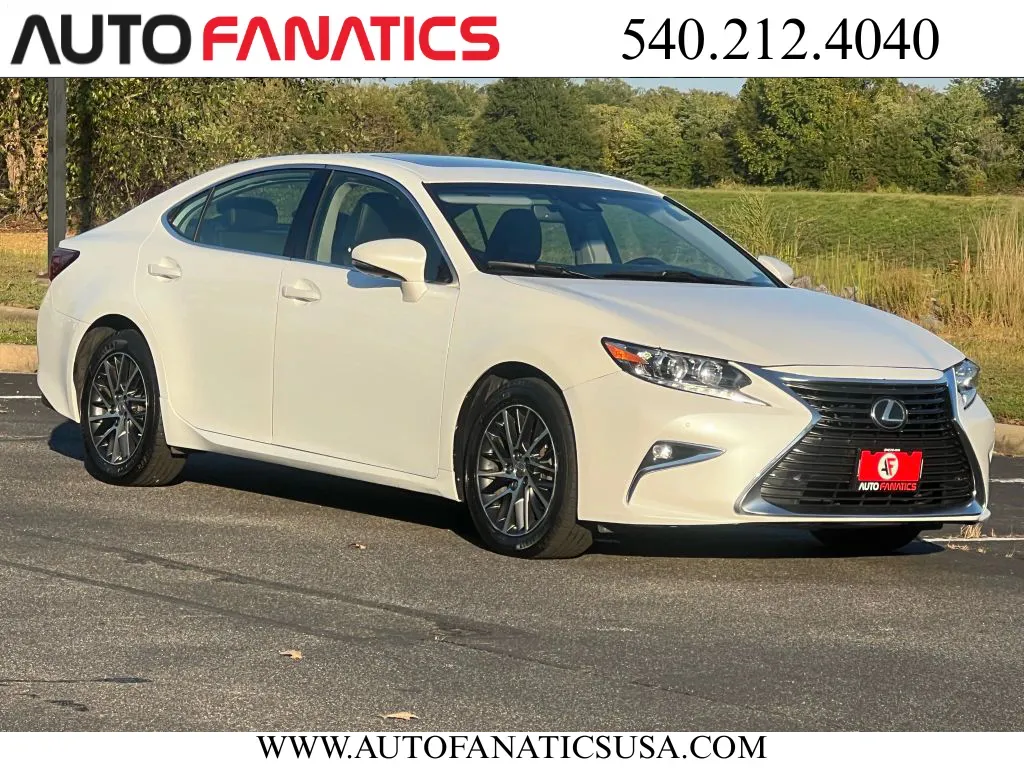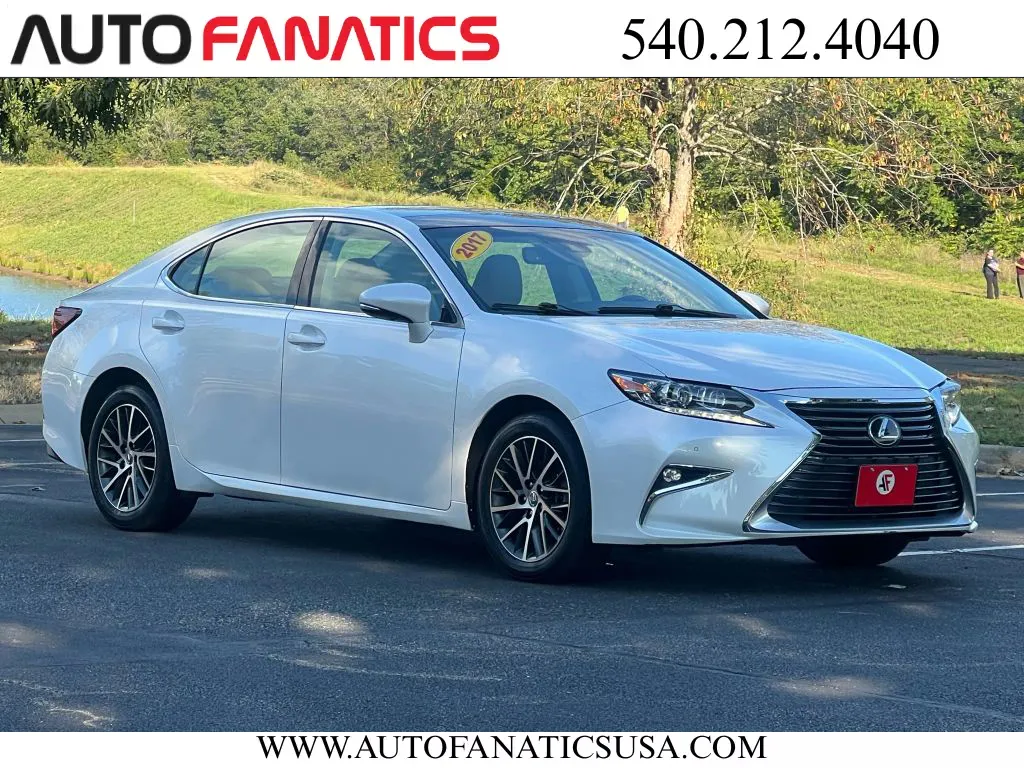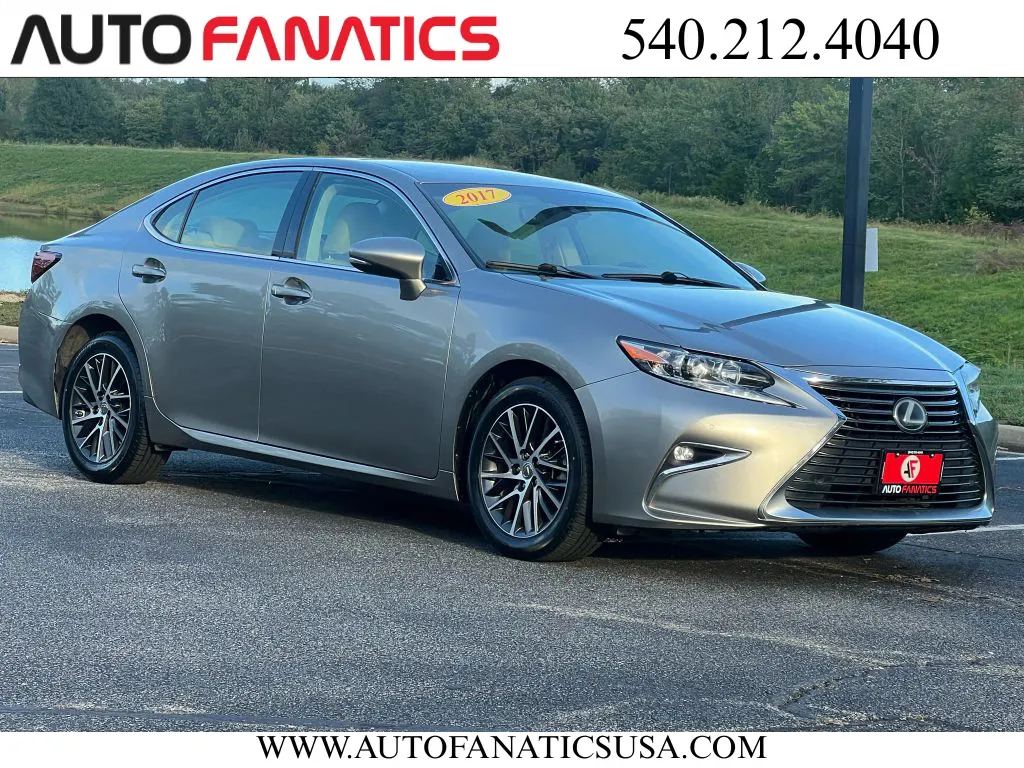What Is My Car Worth? A Guide to Valuation
Every car has a story, and that story is written in its mileage, its service records, and even the small dings it’s collected over the years. When you decide it’s time to sell, that story directly impacts the answer to the question, what is my car worth? To get the best price, you need to know which parts of that story matter most to buyers and dealerships. We’ll walk you through how to read your car’s history, assess its current condition honestly, and present it in the best possible light, giving you the confidence to get a great deal.
Key Takeaways
- Look Beyond the Odometer: Your car's final value is a mix of its age, mileage, overall condition, and current market demand. Understanding how these factors work together is the first step to setting a realistic price.
- Invest Smartly Before You Sell: You have the power to improve your car's final offer. Focus on high-impact, low-cost actions like a professional detail, catching up on routine maintenance, and organizing all your service records to prove its history of care.
- Know Your Numbers Before You Negotiate: A car has several values—trade-in, private party, and retail—and they aren't the same. Use online tools for a baseline, but get a professional appraisal to understand your car's true local market worth before you start any negotiations.
What Determines Your Car's Value?
Figuring out what your car is worth can feel like a mystery, but it’s more straightforward than you might think. A car’s value isn’t just one number pulled out of thin air; it’s a reflection of several key factors working together. Think of it like a recipe where each ingredient plays a part in the final result. From the numbers on the odometer to the current demand for your specific model, everything counts.
Understanding these elements gives you the power to set realistic expectations, whether you’re planning to sell your car or trade it in for something new. It helps you see your vehicle through the eyes of a potential buyer or a dealership, so you can prepare for a smooth and fair transaction. We’ll break down the five main components that shape your car’s final price tag: its age and mileage, overall condition, market trends, location, and any special features or modifications it might have. Knowing how these pieces fit together is the first step toward getting the best possible value for your vehicle.
How Age and Mileage Play a Role
Age and mileage are the two most immediate factors that influence a car's value. As soon as a new car leaves the lot, it begins to depreciate, and this process continues over time. Generally, the newer the car, the higher its value. Mileage works in a similar way; as a rule, a vehicle's worth will drop with every 10,000 miles added to the odometer. This is because higher mileage suggests more wear and tear on the engine, transmission, and other critical parts. A low-mileage car for its age is often a signal of a well-maintained vehicle, making it more attractive to buyers.
The Importance of Vehicle Condition
While you can’t turn back the clock on age or mileage, your car’s condition is where you have the most control. A vehicle that has been meticulously cared for will always command a higher price than one that's been neglected. To get the best price, it’s important to honestly assess and describe its condition. This includes the exterior (any scratches, dents, or rust), the interior (stains, tears, or odors), and its mechanical health (tires, brakes, and engine performance). A clean, well-maintained car signals to buyers that it’s been treated with care, making them more confident in their purchase.
Current Market Demand and Trends
A car is only worth what someone is willing to pay for it, and that’s where market demand comes in. The popularity of certain makes and models can significantly impact their resale value. For example, when gas prices are high, fuel-efficient sedans and hybrids often see a surge in demand. Similarly, reliable brands known for their longevity tend to hold their value well over time. Dealerships constantly analyze these automotive industry trends to stock their lots with vehicles people are actively searching for, like the popular SUVs and trucks we see in the Fredericksburg area.
Why Location and Season Matter
Where and when you sell your car can make a surprising difference. A convertible will naturally have more appeal—and a higher price tag—in the spring and summer than in the dead of winter. Likewise, a four-wheel-drive truck or SUV is more valuable in a place like Northern Virginia, where snowy roads are a real possibility, than it would be in a warmer climate. Dealerships are keenly aware of these seasonal triggers and adjust their inventory accordingly. Timing your sale to align with peak demand for your vehicle type can help you get a better offer.
The Impact of Features and Modifications
Extra features can add to your car’s appeal, but not all of them add significant monetary value. Factory-installed options like a sunroof, leather seats, or an advanced safety system tend to hold their value better than aftermarket additions. In fact, some modifications can even hurt your car’s worth by narrowing its appeal to a smaller group of buyers. While you might love that custom sound system or unique paint job, many used-car shoppers are looking for a reliable, unmodified vehicle. It’s often the practical, everyday features that contribute most to a strong resale price.
Know Your Numbers: The Types of Car Values
When you start researching what your car is worth, you'll quickly notice there isn't just one magic number. Instead, you'll come across several different terms: trade-in value, private party value, retail value, and more. It can feel a little confusing at first, but think of it like this: the same car can have different prices depending on how and where it's being sold. Each of these values tells a different part of your car's financial story. Understanding them is your first step toward making a smart decision, whether you're planning to sell your current vehicle, trade it in for an upgrade, or just want to know where you stand.
Getting a handle on these numbers helps you set realistic expectations, spot a fair deal, and feel confident when you walk into a dealership or meet a private buyer. It removes the guesswork and empowers you to have a clear, productive conversation about price. This knowledge is your best tool for making a smart financial move, so you can be sure you're getting a fair deal or setting the right price. For example, knowing your car's trade-in value prevents you from being disappointed by a dealer's offer, while understanding its private party value helps you price it competitively if you sell it yourself. It’s all about knowing the language of the car market so you can make the best choice for your situation. Let's break down exactly what each of these key values means for you.
What Is Trade-in Value?
The trade-in value is the amount a dealership, like us here at Auto Fanatics, will offer you for your current vehicle when you're purchasing another one from them. This is all about convenience. You get to drive in with your old car and drive out with your new one in a single, simple transaction. The dealer handles all the paperwork, and you don't have to worry about listing your car, meeting with strangers, or handling the title transfer yourself. This value is typically a bit lower than what you might get selling it yourself because it reflects what the dealer can expect to get for the car at auction or after reconditioning it for their own lot. You can easily get your trade-in value online to get a great starting point.
What Is Private Party Value?
Private party value is the price you can expect to get if you sell your car directly to another individual. This number is usually higher than the trade-in value but lower than the retail price you'd see at a dealership. Why the difference? Because as a private seller, you aren't offering the same perks as a dealer. The buyer won't get financing options, a warranty, or the peace of mind that comes from buying from an established business. Selling privately can put more money in your pocket, but it also means you're responsible for everything—creating the listing, vetting potential buyers, scheduling test drives, and managing the final sale paperwork. It's a trade-off between getting a higher price and doing more work.
What Is Retail Value?
Retail value is the price a dealership lists a used car for on their lot. You'll see this price on the window sticker when you browse our selection of used cars. This number is the highest of the three because it includes the costs the dealership has invested to make the car ready for sale. This covers a thorough inspection, any necessary repairs, professional detailing, and the costs of marketing the vehicle. It also includes the dealership's profit margin and often comes with benefits for the buyer, like a limited warranty, a vehicle history report, and the assurance that you're buying from a reputable source. This value represents a car that is ready to go and backed by a business.
What Is Certified Pre-owned Value?
Certified Pre-owned (CPO) value applies to a specific class of high-quality used cars. A CPO vehicle has been inspected, refurbished, and certified by the manufacturer or another authority to meet a strict set of standards. These cars are usually low-mileage, recent models that are in excellent condition. The real benefit of a CPO car is the peace of mind it offers. They almost always come with an extended manufacturer's warranty, roadside assistance, and other perks you wouldn't get with a typical used car. Because of this rigorous certification process and the added benefits, the CPO value is higher than that of a comparable non-certified used vehicle. You're paying a premium for a car that's as close to new as you can get.
How to Get an Accurate Car Valuation
Figuring out what your car is truly worth can feel like trying to hit a moving target. Is it what you see online? What a friend told you they got for a similar model? The truth is, an accurate valuation isn't just one number—it's a well-researched estimate based on several key factors. To get the most complete picture, you’ll want to look at your car from a few different angles.
Think of it as building a case for your car's value. You'll start with online tools to get a general idea, then bring in an expert for a hands-on opinion. You’ll also need to dig into your car’s past with a history report and gather all the paperwork that proves it’s been well-cared for. Combining these steps will give you a realistic and defensible price, whether you’re planning to trade it in, sell it yourself, or just want to know where you stand. It takes a little effort, but knowing your numbers is the first step toward a great deal.
Use Online Valuation Tools
Your first stop should be the web. There are several reputable online tools that can give you a solid baseline for your car’s value in minutes. Websites like CARFAX use your Vehicle Identification Number (VIN) to check for accidents and see how many owners the car has had. Others, like NADAguides and Consumer Reports, provide a range of values, including the trade-in value and the private market value. These estimators are fantastic for getting a quick snapshot based on your car's make, model, mileage, and general condition. It’s a great way to manage your expectations before you even leave the house and see what your trade-in value might look like.
Get a Professional Appraisal
While online tools are incredibly helpful, they can’t see your car in person. For a more precise figure, you’ll want a professional appraisal. An expert can assess factors that a computer algorithm can't, like the quality of paint, the smell of the interior, or how the engine sounds. At Auto Fanatics, our team provides fair, transparent, and no-pressure appraisals. We look at every detail to give you a concrete offer you can trust—it’s a key part of the experience that has earned us over 500 five-star reviews from our Fredericksburg neighbors. If you’re ready to see what a professional thinks, we make it easy to sell us your car.
Pull the Vehicle History Report
Every car has a story, and that story directly impacts its value. A vehicle history report from a service like CARFAX is essential. By simply entering your car’s VIN, you can pull a detailed report that shows its accident history, service records, title status, and number of previous owners. A clean report with regular maintenance can significantly increase your car’s worth, while a history of accidents or flood damage will lower it. This report gives you—and any potential buyer—a transparent look at the car’s past. It’s why we ensure every vehicle in our used car inventory is thoroughly vetted.
Gather Your Documentation
Being organized pays off. Before you seek a valuation, gather all your car-related paperwork in one place. This includes the vehicle’s title, registration, and, most importantly, all of your maintenance and repair records. A complete service history is powerful proof that you’ve taken excellent care of your vehicle. It shows a potential buyer that you’ve been a responsible owner, which can help you justify a higher price. Having everything ready not only makes the selling process smoother but also builds confidence and trust. It’s the kind of transparency and integrity we value, and you can learn more about our commitment on our About Us page.
How to Honestly Assess Your Car's Condition
Taking an honest look at your car's condition is the most important step in determining its value. Before you can get an accurate number, you need a clear picture of what you’re working with. Think of it like a potential buyer would: what stands out, for better or worse? Being realistic now will save you from surprises later, whether you're trading in or selling privately. A thorough, objective assessment helps you set a fair price and gives you confidence when you start negotiating. It’s not about finding every flaw, but about creating a complete and honest picture of what you’re offering. This transparency is key to a smooth process and helps you understand the valuation you receive from online tools or dealerships. It’s the same principle we operate on here at Auto Fanatics—an honest, straightforward approach builds trust, which is why over 500 customers have given us five-star reviews. By taking the time to evaluate your car fairly, you’re setting yourself up for a positive and successful experience. This section will walk you through exactly how to look at your car with a critical but fair eye, covering everything from the paint job to the paperwork.
Evaluate the Exterior
First impressions matter. Walk around your car and take a good, hard look at the exterior. Small dings from shopping carts, noticeable scratches, or areas of rust can impact the value. Check the condition of the paint—is it faded or peeling? Look at the tires to see if the tread is worn down. Don’t forget the glass; inspect the windshield and windows for any chips or cracks. To get the best price, Consumer Reports suggests giving your car a thorough wash. A clean car instantly looks more cared for and makes it easier to spot any cosmetic issues you need to note.
Inspect the Interior
Now, open the doors and assess the inside. A clean interior signals a well-maintained vehicle. Check the upholstery for any rips, stains, or burns. Do all the interior lights, buttons, and features work correctly? Test the air conditioning and heat, the radio, and the power windows and locks. Lingering odors from smoke or pets can also lower the value, so be honest with yourself about how the car smells. Just like the outside, a deep clean can make a huge difference. Vacuum the floors, clean the mats, and wipe down all the surfaces to present your car in the best possible light.
Check Its Mechanical Health
You don’t need to be a mechanic to get a sense of your car’s mechanical condition. Start with the basics: are there any warning lights on the dashboard? When you drive, do you hear any unusual noises like squealing brakes or a knocking engine? Note any known issues, whether it’s a slow oil leak or a transmission that feels a bit clunky. While it’s wise to fix minor, inexpensive problems, you’ll need to weigh the cost of major repairs against the potential increase in value. Being upfront about any mechanical quirks is always the best policy.
Review the Service History
A well-documented service history is like a gold star for your car. It shows potential buyers that you’ve taken good care of the vehicle. Gather any receipts you have for routine maintenance like oil changes, tire rotations, and brake replacements. If you have records of major repairs, that’s even better. This paperwork builds trust and can justify a higher asking price. As CARFAX notes, this data is crucial for determining an accurate value for your used car. Having everything organized makes the process easier when you decide to sell us your car.
Account for Accidents and Repairs
Accidents happen, and it’s essential to be transparent about them. Even minor fender-benders can show up on a vehicle history report. The Vehicle Identification Number (VIN) allows buyers and dealers to look up important details, including accident history. Be prepared to discuss any past damage and the quality of the repairs. A professional repair job might have a minimal impact on value, while shoddy work can be a major red flag. Honesty is the best approach, as it builds trust and ensures a fair transaction when you go to get your trade-in value.
Simple Ways to Increase Your Car's Value
Putting a little time and effort into your car before you sell it can make a big difference in your final offer. Think of it as staging a home—you want to present your vehicle in the best possible light to show potential buyers its true potential. Whether you’re planning to sell it privately or trade it in at a dealership, these simple steps can help you get a better price. A well-maintained and clean car not only looks more appealing but also gives buyers confidence that they’re making a smart purchase.
Most of these tips don’t require a huge budget, just a bit of planning. By tackling small issues, gathering your documents, and giving your car a good cleaning, you’re building a stronger case for its value. It shows you’ve been a responsible owner, and that care translates directly into dollars. Here at Auto Fanatics, our team has appraised thousands of vehicles, and the ones that fetch the best prices are always the ones that have been clearly looked after. Our 500+ five-star reviews often come from customers who were thrilled with both the car they bought and the fair value they received for their trade-in. These strategies will help you highlight your car’s best features and make the entire selling process smoother and more profitable.
Catch Up on Maintenance
Before you list your car or bring it in for an appraisal, make sure its routine maintenance is up to date. This is one of the easiest ways to show that the vehicle has been well cared for. Address any illuminated dashboard lights, like the check engine light, as these are immediate red flags for buyers. Take care of simple tasks like getting an oil change, topping off all the fluids, and ensuring the tires are properly inflated. If you’ve been putting off a minor repair, now is the time to fix it. A car that’s in excellent mechanical condition will always command a higher price than one with a list of known issues.
Invest in Professional Detailing
First impressions are everything, and a sparkling clean car makes the best one. Investing in a professional detail is one of the most effective ways to increase its perceived value. A thorough cleaning goes beyond a simple car wash—it includes deep cleaning the interior carpets and upholstery, conditioning leather seats, washing the engine bay, and waxing the exterior to a brilliant shine. A car that looks and smells fresh feels newer and more valuable. This relatively small expense can add hundreds of dollars to your selling price because it gives buyers the impression that the car was meticulously maintained.
Organize Your Paperwork
Having all your vehicle’s documentation in order builds trust and transparency with potential buyers. Gather your service records, the owner's manual, the title, and registration into a single folder. Maintenance receipts prove you’ve kept up with oil changes, tire rotations, and other necessary services. It’s also a great idea to get a vehicle history report from a service like CARFAX. This report details the car’s ownership history, accident record, and more. Presenting a complete and organized file shows you have nothing to hide and can help you justify your asking price with confidence.
Make Smart Pre-Sale Repairs
You don’t need to overhaul your car, but making small, strategic repairs can have a big payoff. Focus on cosmetic fixes that are highly visible to buyers. For example, using a paint pen to touch up minor scratches or hiring a specialist for paintless dent removal can dramatically improve the car's appearance. Repairing a cracked windshield is also a must, as many buyers won't consider a car without it. Fixing curb rash on your wheels is another inexpensive repair that makes a big difference. The key is to choose fixes that cost less than the value they add.
Understand Which Modifications Help (and Hurt)
While you may love the custom upgrades you’ve made, not all modifications add value—and some can even decrease it. Features that appeal to a broad audience, like an upgraded infotainment system with Apple CarPlay or a remote starter, can be a plus. However, highly personal modifications like loud exhausts, lowered suspensions, or custom paint jobs can narrow your pool of potential buyers. In most cases, a vehicle that is closer to its original factory condition will have a higher resale value. If possible, consider removing any extreme modifications before you sell.
How to Get the Most from Your Car Sale
Once you have a clear idea of your car's worth, the next step is turning that value into cash. Selling a car involves more than just handing over the keys; a little strategy can make a big difference in your final sale price and overall experience. Whether you’re looking for maximum profit or maximum convenience, being prepared is your best asset. From choosing the right sales path to handling negotiations like a pro, these steps will help you get the best possible outcome. At Auto Fanatics, we believe in making every part of the car ownership journey transparent and simple, which is why we’re happy to share these tips for a successful sale.
Decide: Dealer or Private Sale?
Your first big decision is choosing how to sell your car. Selling to a dealership is the fastest and most straightforward option. You can walk in, get an offer, and often leave with a check the same day, avoiding the hassle of listing, showing, and negotiating with individual buyers. The trade-off is that the offer might be lower than what you could get from a private buyer. On the other hand, a private sale can yield a higher price, but it requires more work and carries more risk. You’ll be responsible for marketing, meeting potential buyers, and handling all the paperwork securely. To get the best dealer price, Consumer Reports suggests getting offers from a few different places. We invite you to sell us your car and experience the transparent, no-pressure approach that’s earned us over 500 five-star reviews.
Find the Best Time to Sell
Timing can have a surprising impact on your car's value. A key factor is mileage. As a general rule, a vehicle’s value drops more significantly as it approaches major mileage milestones. For example, selling your car before it hits 100,000 miles can often result in a better offer than selling it just after. If you’re nearing one of these thresholds, it might be a good time to act. Seasonality can also play a role; convertibles tend to sell better in the spring and summer, while SUVs and all-wheel-drive vehicles are more in demand leading into the winter months. Planning your sale around these factors can help you connect with motivated buyers who are willing to pay more.
Set a Competitive Price
Pricing your car correctly is a delicate balance. Price it too high, and you’ll scare away potential buyers. Price it too low, and you’ll leave money on the table. This is where online tools become invaluable. Resources like Kelley Blue Book provide a "Fair Purchase Price" based on real-time sales data for similar cars in your area. This gives you a realistic starting point for a private sale. If you're considering a trade-in, you can also get an instant estimate online. Our car loan calculator can also help you understand what buyers might be budgeting for, giving you another perspective on setting a competitive price that moves.
Prepare Your Negotiation Strategy
Whether you're dealing with a private buyer or a dealership, you should be ready to negotiate. The best way to prepare is to have all your information in order. Start by getting a CARFAX report, which details your car's accident history and number of previous owners. Knowing your vehicle's full story allows you to speak confidently about its condition and value. Have your maintenance records handy to prove you’ve taken good care of it. It’s also smart to set your "walk-away" price beforehand—the lowest amount you’re willing to accept. This keeps you grounded during discussions and helps you make a clear-headed decision without feeling pressured.
Protect Yourself During the Sale
If you opt for a private sale, taking precautions is essential. Since private buyers don't get the security of financing options or warranties that a dealership provides, they may be more cautious—and you should be, too. Always meet potential buyers in a safe, public place, like the parking lot of a police station. When it’s time for a test drive, go with them and bring a friend if possible. Never hand over the keys without verifying they have a valid driver's license. Most importantly, ensure you have secured payment—cash or a cashier’s check verified by your bank—before you sign over the title. These simple steps can protect you from potential scams and ensure the transaction goes smoothly.
Why Your Local Market Matters
Online valuation tools are a great starting point, but they often give you a broad, national average. The truth is, your car’s value can change significantly from one state to another—and even from one town to the next. Where you sell your car is just as important as what you’re selling. Local factors in and around Fredericksburg, from the types of roads we drive on to our regional economy, all play a part in determining what your car is truly worth.
Understanding these local dynamics is key to getting a fair price. A dealership that’s part of the community has a pulse on what local buyers are looking for and what they’re willing to pay. They see the day-to-day trends that a national algorithm might miss. That’s why getting a local appraisal is so important. It grounds your car’s value in the reality of the Fredericksburg market, giving you a much more accurate and actionable number to work with when you decide to sell or trade in your vehicle.
Understand Regional Price Differences
A pickup truck that’s highly sought after in a rural community might fetch a lower price in a dense city where parking is tight and fuel economy is a priority. Similarly, a convertible will always have more appeal in a sunny, warm climate than in a place with long, snowy winters. These regional preferences create pockets of high and low demand across the country. Here in Virginia, factors like proximity to both city and country life can influence whether sedans, SUVs, or trucks are more popular, directly affecting their resale value. This is why a one-size-fits-all national value rarely tells the whole story.
Look at Local Supply and Demand
Basic economics plays a huge role in your car’s value. If you’re selling a popular model and there are dozens of similar vehicles for sale in the Stafford and Spotsylvania area, the high supply might drive the price down. On the other hand, if you have a well-maintained, less common model that local buyers are looking for, you’re in a much stronger position. A quick look at local dealership inventories can give you a sense of what’s available and help you understand where your car fits into the local market landscape. This simple step helps you gauge whether your car is a common find or a rare gem.
Consider Seasonal Timing
Just like with real estate, timing matters when you sell a car. Demand for certain vehicles ebbs and flows with the seasons. Four-wheel-drive trucks and SUVs are often in higher demand leading into the fall and winter months, while sports cars and convertibles see a spike in interest as the weather warms up in the spring. Selling your vehicle during its peak season can lead to a quicker sale and a better offer. A local dealer is always tuned into these buying cycles and can help you capitalize on seasonal trends to get the most for your car.
Scope Out the Competition
One of the best ways to get a feel for your car’s local value is to see what similar vehicles are selling for right here in the Fredericksburg area. Spend some time browsing the websites of local dealerships and checking out private seller listings. Pay close attention to cars that are the same make, model, year, and trim level as yours, and note their mileage and condition. This research will give you a realistic price range and help you set expectations when you start looking for offers on your used car.
Related Articles
Frequently Asked Questions
Why is the dealership's offer different from the value I saw online? Online valuation tools are a fantastic starting point, but they provide a general estimate based on national data. They can't see the specific condition of your car or account for local market trends here in Fredericksburg. A dealership's offer is a real, in-person appraisal that considers your car's exact condition, its service history, and the current demand for that specific model in our area. Think of the online number as a helpful ballpark figure and the dealer's offer as the precise, actionable price.
Is it better to sell my car myself or trade it in? This really comes down to what you value more: time or money. Selling your car privately will almost always get you a higher price, but it requires you to handle every step yourself, from advertising and showing the car to managing the final paperwork. Trading it in at a dealership is all about convenience. It’s a fast, secure, and simple transaction where you can settle everything in a single visit, which many people find is worth the slightly lower price.
Do I really need to fix every little scratch before I sell my car? Not at all. The key is to be strategic. You should focus on small, inexpensive repairs that make a big visual impact. Fixing a cracked windshield or touching up noticeable paint chips can be a smart investment. However, you probably won't recover the cost of major mechanical repairs or extensive bodywork. It's often better to be transparent about larger issues and price the car accordingly rather than sinking a lot of money into it beforehand.
How much does a past accident hurt my car's value? A past accident will almost always lower a car's value, but the extent depends on a few things. The severity of the damage and the quality of the repairs are the most important factors. A minor fender-bender that was professionally repaired will have a much smaller impact than a major collision with structural damage. Being upfront about the accident and having documentation of the repairs is the best way to build trust with a potential buyer and still get a fair price.
What's the one thing I can do right now to get a better price for my car? If you only have time to do one thing, invest in a professional detail. A car that looks, feels, and smells clean makes an incredible first impression and signals to buyers that it has been well-maintained. It’s a relatively small expense that can significantly increase the perceived value of your vehicle, often adding several hundred dollars to the offers you receive. It’s the single most effective way to present your car in its best possible light.










